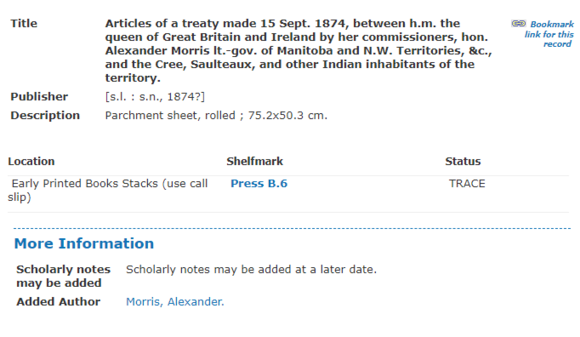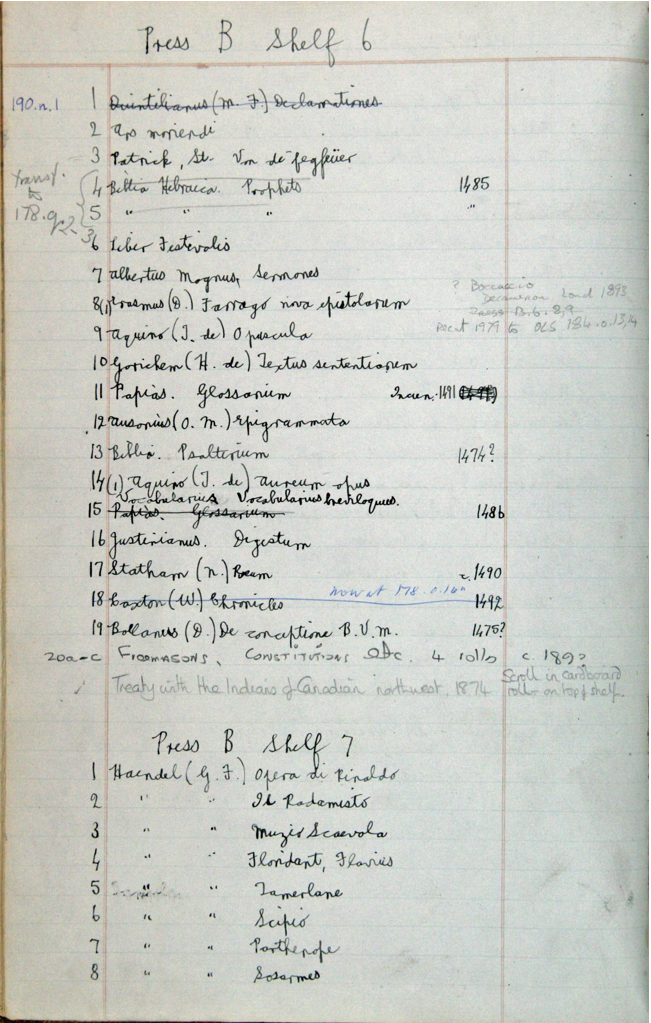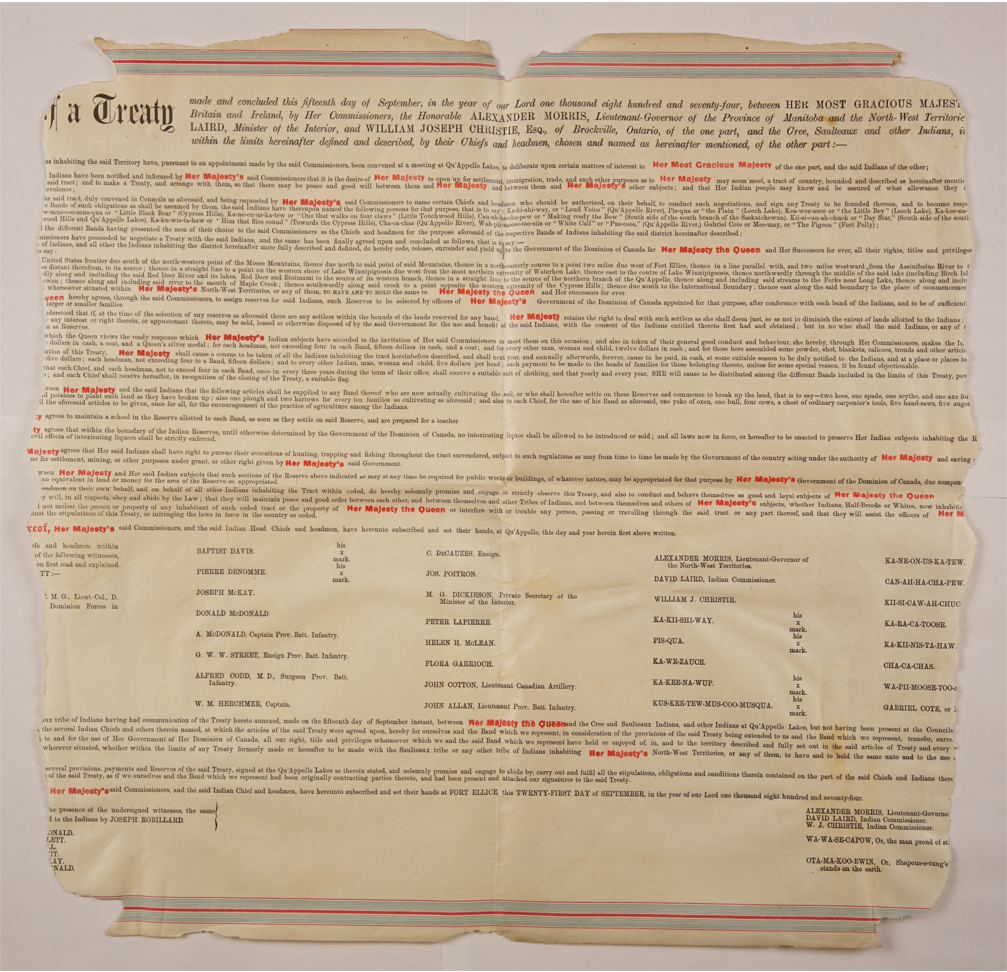Treaty Parchments, and what I'm looking for when I look in the archive
By Matthew James Weigel
In the summer of 2019, I was searching through library collections globally to track down copies of parchments of the Numbered Treaties. These copies were produced sometime between the mid 1870s and the early 1910s. Signatories of the treaties were always explicit in asking for copies to verify conditions agreed to orally that were not always written directly on the treaty manuscripts. Since time immemorial, copies were an important tool for maintaining the integrity of treaties. The history of this practice goes back before contact with Europeans, but the form these copies take would change with access to new printing materials and methods. In the vast majority of cases, the printed copies of the Numbered Treaties did not end up being delivered to the signatories as requested. Finding these copies with the intention of getting them to their rightful owners is difficult but necessary work. Work those archival institutions globally should be helping to undertake.
In the catalogue of the Library of Trinity College Dublin, I came across a curious entry:
This catalogue entry indicates that it is a copy of Treaty No. 4 and that it is a rolled-up sheet of parchment. Immediately I had many questions and reached out to the folks at the library to try to get some answers. One of the questions was about the status of the parchment, which in the catalogue is just listed as TRACE.
Unfortunately, I found out that TRACE is usually a bad sign. I learned from Simon Lang with the library’s special collections that the building the parchment was housed in was rebuilt in 1992. They still hold a paper catalogue of their records, which indicate that the treaty parchment was stored in a cardboard tube on top of a shelf. Sadly, with no record in their Manuscripts Department, it was likely that the parchment was lost or stolen during the rebuild.
Simon Lang was kind enough to send me a photo of that paper catalogue entry:
Your CanLit News
Subscribe to Open Book’s newsletter to get local book events, literary content, writing tips, and more in your inbox
Written in pencil you can see: “Treaty with the Indians of Canadian northwest, 1874 Scroll in cardboard roll— on top of shelf.” Many interesting things were also stored on that shelf, including as you can see, the Caxton Chronicles 1492: some of the first printed materials off a printing press in England.
Fortunately, there is at least one extant copy of the Treaty No. 4 parchment. It is currently held in the special collections of, you might have guessed, the University of Alberta:
Bruce Peel Special Collections has been very helpful in my work and having recently acquired this copy, I was one of the first people at the university to be able to take a look at it. As you can see it sustained some damage during its journey from an unknown Canadian printing press at the end of the 19th century, all the way to Edmonton when it arrived with us in 2020. It appears to have been folded into quarters, and then had its edges ripped while folded, leaving a symmetrical tear pattern behind.
Fragile items of great significance are frequently traded both legally and illegally. Damage is common. Loss is common. Theft is common. And while the stewardship of these objects is frequently taken up by public institutions, these objects almost always had a different original intended destination than to be sat on top of a shelf or secreted away in a private illegal collection. It is commonly said that important artefacts belong in museums, but it is also important to consider whose museum, and whose collection they belong in. And when they represent such significant ongoing relationships as they do in the case of the Numbered Treaties of the North-West, those questions are as living and vital as the treaties themselves.
The views expressed in the Writer-in-Residence blogs are those held by the authors and do not necessarily reflect the views of Open Book.
Matthew James Weigel is a Dene and Métis poet and artist. He is the designer for Moon Jelly House press and his words and art have been published in Arc, The Polyglot, and The Mamawi Project. Matthew is a National Magazine Award finalist, a Cécile E. Mactaggart Award winner, and winner of the 2020 Vallum Chapbook Award. His chapbook It Was Treaty / It Was Me is available now. Whitemud Walking is his debut collection.






